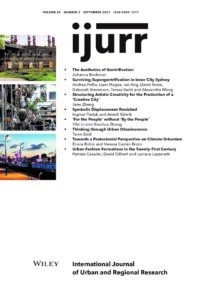The constant interplay between top‐down authority and bottom‐up agency in the production of urban space has invigorated much scholarly debate in urban studies. China, with its astonishingly rapid urban change, offers a fruitful context for empirical investigations. In this article, we seize the opportunity of Shanghai’s recent waterfront development to unpack the process by which the local state in Shanghai planned, designed, delivered and governed the city’s much‐storied waterfront. Ostensibly framed as an initiative for the people, the development of Shanghai’s waterfront was decidedly not by the people. Powerful state actors and their affiliates in universities and architectural firms collaboratively pursued an urban developmental process that paradoxically enhanced residents’ right to urban space and denied citizens’ right to participation. The local state reconciled this apparent paradox by articulating a ‘quality people’ it sought to serve, fabricating an entire profile of their supposed aesthetic values, leisure habits, spatial preferences and luxurious lifestyles. In its essence, this ‘people’ framing represents an extraordinarily cunning approach to state hegemony, enabling the local state to pursue heavy‐handed interventions while upholding a gentle, humanistic ‘for the people’ discourse.
Details
Written by:
Yifei Li & Xiaohua Zhong
Digital Object Identifier (DOI)
10.1111/1468-2427.12964
About DOI

